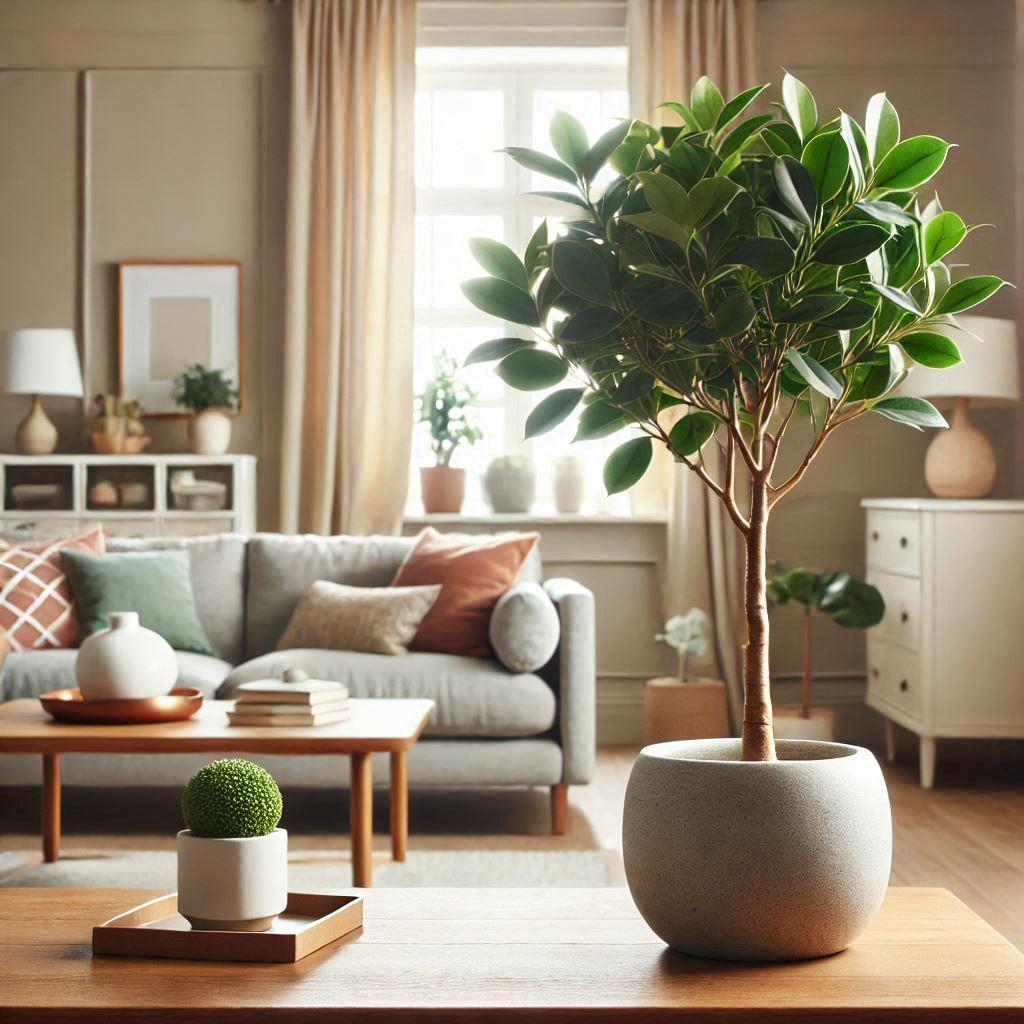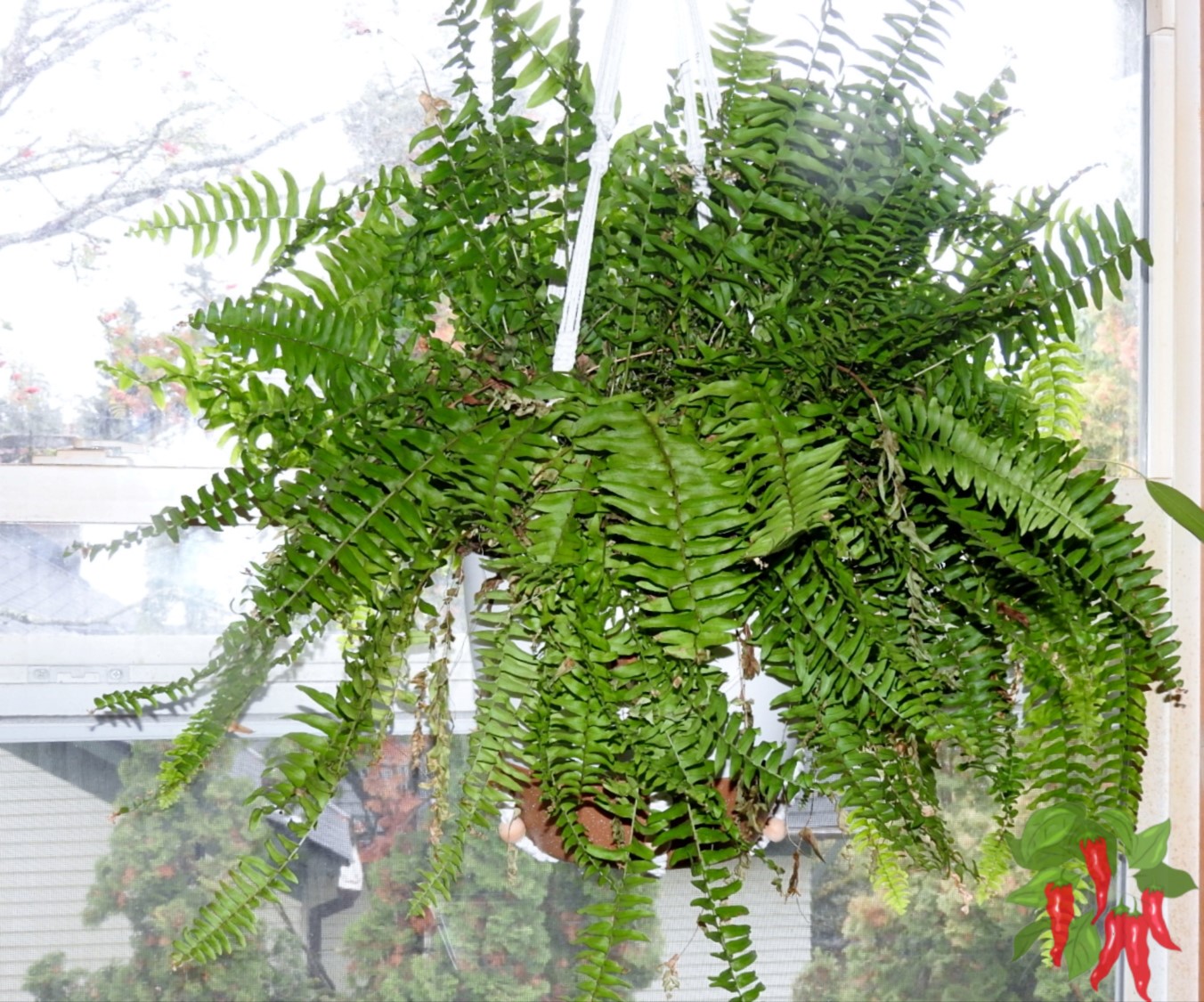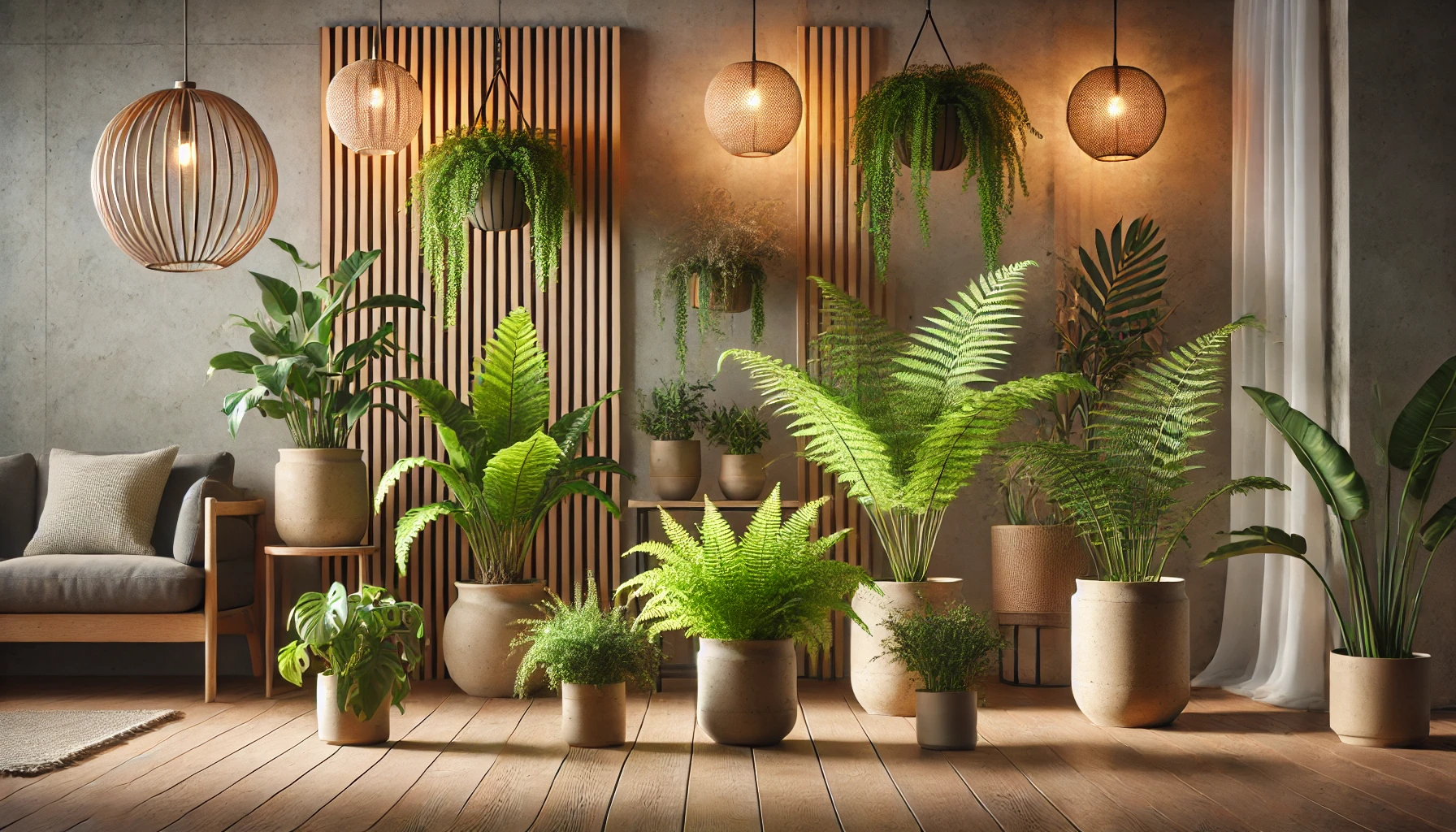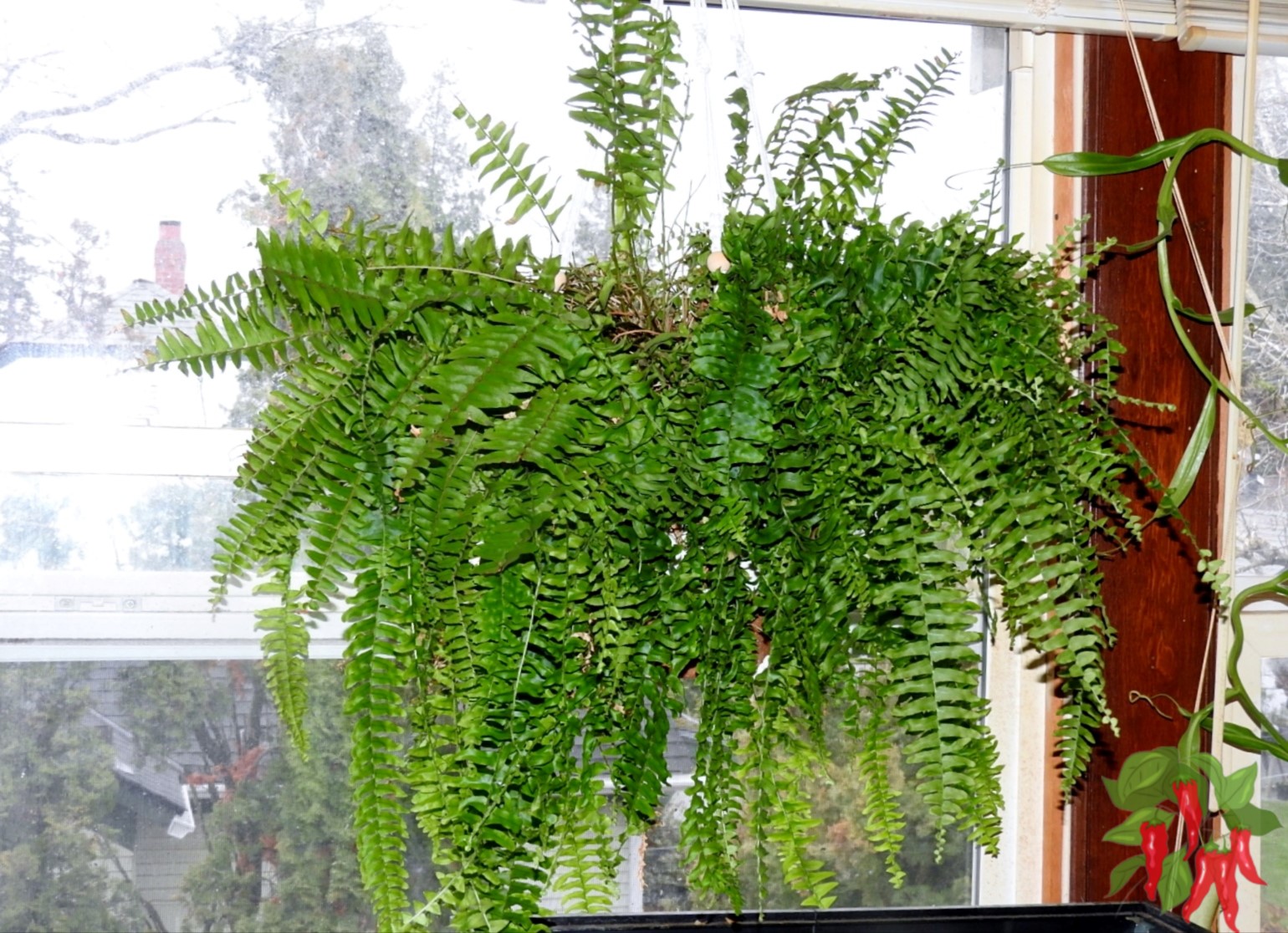This post contains affiliate links. If you buy something from one of our links we may earn a commission. Thanks

Today, we’re diving into the world of indoor Ficus plant care, blending practical growth tips with the ancient art of Feng Shui.
Let’s explore how to nurture your Ficus plant and position it to enhance the positive energy in your home.
Ficus Plant Care Key Takeaways
- Ficus Plant Care indoors involves providing bright, indirect light.
- Water when the top inch of soil feels dry.
- Use a well-draining soil mix and use a pot with drainage holes.
- Fertilize every 4 weeks during the growing season.
- Prune to maintain shape.
- For Feng Shui place your Ficus in the Southeast corner to attract prosperity or near entryways for welcoming energy.
Ficus Plant Care Indoors: Feng Shui Placement & Growth Tips An Introduction

Ficus Plant Care Indoors is more than just keeping a leafy friend alive it’s also about creating a calming, vibrant space that thrives.
From proper lighting to perfect placement in Feng Shui corners, these versatile plants can transform your home into a haven of beauty and balance.
Ready to unlock their secrets?
Part 1: Understanding Ficus Plants
Ficus plants are a staple in indoor gardening for a good reason. They’re versatile and beautiful and bring a touch of nature into your home.
Whether you’re new to caring for houseplants or looking to expand your collection, understanding the basics of Ficus plants will help you keep them happy and thriving indoors.
Let’s get started!
Types of Ficus Plants for Indoors
Ficus plants come in a variety of shapes and sizes, making it easy to find one that suits your style and space.
Ficus is a genus of about 850 species of woody trees, shrubs, vines, epiphytes and hemiepiphytes in the family Moraceae. Collectively known as fig trees or figs, they are native throughout the tropics with a few species extending into the semi-warm temperate zone. https://en.wikipedia.org/wiki/Ficus
Each type has its unique charm, and they’re all great for adding greenery to your home. Here are some popular types of Ficus plants to consider:
-
- Weeping Fig (Ficus benjamina)

Ficus benjamina Variegated – 6″ Pot
With its graceful arching branches and shiny, dark green leaves, this classic Ficus is perfect for adding elegance to any room. It thrives in bright, indirect light and brings a touch of sophistication to your home.
This plant stands out with its broad, glossy leaves and low-maintenance nature. Known for improving air quality, the rubber plant is a hardy choice that adds a lush, bold look to your indoor garden.
A true showstopper, this plant’s large, violin-shaped leaves make it a favorite among houseplant enthusiasts. It works well as a statement piece and thrives with consistent care in a well-lit spot.
Choose the Ficus that speaks to your style and space, and enjoy the natural beauty it brings to your home!
The Symbolism of Ficus in Feng Shui
Ficus plants carry deep symbolic meaning in Feng Shui, making them a popular choice for enhancing the energy of your space.
Their presence can shift the mood of a room and influence the flow of positive energy. Let’s look at what Ficus plants represent in Feng Shui:
- Calmness
The steady, unwavering growth of a Ficus plant creates a sense of peace and tranquility. Placing one in your home can promote a serene atmosphere, perfect for unwinding after a busy day. - Resilience
Ficus plants are evergreen, which symbolizes lasting strength and endurance. Their steady presence serves as a reminder to stay strong, even during challenging times. - Vitality
The lush, vibrant foliage of a Ficus plant embodies life energy. Having one in your space can inspire growth and positivity, encouraging a thriving environment for you and your family.
By integrating Ficus plants into your home with intention, you can harness these powerful symbolic qualities to create a balanced and uplifting living space.
Part 2: Caring for Ficus Plants Indoors
Caring for Ficus plants indoors can seem tricky at first, but once you understand their needs, it becomes a rewarding experience.
These plants thrive with the right balance of light, water, and attention, making them a joy to grow. Let’s dig into the essentials to keep your Ficus happy and thriving!
Light Requirements
- Bright, Indirect Light: Place your Ficus near a window with filtered sunlight. Avoid direct sun, which can scorch the leaves.
Watering and Humidity
- Consistent Moisture: Water when the top inch of soil feels dry. Overwatering can lead to root rot, so ensure proper drainage.
- Humidity: Ficus plants appreciate higher humidity. Consider occasional misting or using a humidity tray.
Soil and Potting
- Well-Draining Soil: Using a mix containing 75% coco coir and 25% perlite works well. You can add compost or worm castings to this mix.
- Potting: Choose a pot with drainage holes to prevent water accumulation.
Seasonal Care for Ficus
- Spring/Summer: Active growth period; increase watering frequency and consider monthly fertilization.
- Fall/Winter: Growth slows; watering is reduced, and fertilization is halted.
Long-Term Care for Ficus
- Pruning: Trim to maintain shape and remove dead or diseased branches.
- Repotting: Every 2-3 years, or when roots outgrow the pot, refresh the soil and consider a larger container.
Plant Care Reference Guide
| Characteristic | Details |
|---|---|
| Common Name | Ficus, Weeping Fig, Rubber Plant, Fiddle-Leaf Fig |
| Botanical Name | Ficus benjamina, Ficus elastica, Ficus lyrata |
| Native Habitat | Tropical Asia and Australia |
| Plant Type | Evergreen Tree |
| Growth Pattern | Upright with Arching Branches |
| Mature Size | Up to 6 feet indoors |
| Watering | Water when top inch of soil is dry |
| Light/Sun Exposure | Bright, Indirect Light |
| Soil Type | Well-Draining Potting Mix |
| Soil pH | Neutral to Slightly Acidic (6.0-7.0) |
| Temperature | 65-75°F (18-24°C) |
| Humidity | Moderate to High |
| Bloom Time & Flower Color | Rare Indoors |
| Potential Problems | Leaf Drop, Pests (Spider Mites, Scale) |
| Repotting | Every 2-3 Years |
| Hardiness Zones (USDA) | 10-11 |
Part 3: Feng Shui Placement of Ficus Indoors
Placing a Ficus plant in the right spot isn’t just about aesthetics. It’s also about creating a space that feels balanced and welcoming.
In Feng Shui, where you put your ficus, the energy flow in your home is influenced.
Let’s explore how thoughtful placement can boost harmony and bring positive vibes to your space.
Best Placement for Ficus Indoors
Choosing the right spot for your Ficus plant indoors helps it thrive and enhances the energy of your space. Here are two ideal placements to consider:
- Living Room
Place your Ficus in the East or Southeast corner of the living room to encourage growth, prosperity, and harmony. - These areas are linked to family and wealth in Feng Shui, making them powerful spots for positive energy.
- Entryways
A Ficus near the entrance creates a calming and welcoming vibe for residents and guests. - It sets the tone for a tranquil home while promoting balance and peace right from the start.
Thoughtful placement ensures your Ficus looks great while boosting your home’s energy!
Ficus in the Health and Family Corner
Placing a Ficus plant in the Health and Family corner, located in the east area of your home, can have a meaningful impact.
In Feng Shui, this space is associated with vitality, balance, and strong family connections. Here’s how a Ficus plant can enhance this energy:
- Vitality: The plant’s vibrant growth symbolizes health and renewal, encouraging a lively atmosphere.
- Harmony: Its steady, calming presence fosters peaceful relationships and strengthens family bonds.
A Ficus in this corner can be a gentle reminder to nurture yourself and your loved ones.
Ficus in the Wealth Corner
The southeast area of your home, known as the Wealth Corner in Feng Shui, is a prime spot for a Ficus plant.
This area represents abundance and prosperity, and adding a Ficus here amplifies that energy. Here’s how it works:
- Attracts Prosperity: The lush, thriving foliage symbolizes growth and financial success.
- Promotes Abundance: A healthy Ficus in this corner serves as a living affirmation of thriving opportunities.
Placing a Ficus in the Wealth Corner sets the stage for positive energy to flow freely, inviting prosperity into your life.
Ficus Plants in Workspaces
A Ficus plant can transform your workspace into a more productive and peaceful environment.
Whether it’s a home office or a corporate setting, the presence of a Ficus offers several benefits that enhance your workday:
- Promotes Focus: The calming green foliage helps reduce distractions and improve concentration.
- Boosts Creativity: A natural touch in your workspace sparks fresh ideas and innovative thinking.
- Encourages Calm: The steady growth of a Ficus creates a serene atmosphere, reducing stress and promoting clarity.
Adding a Ficus to your workspace can make a big difference in how you feel and perform throughout the day!
Ficus for Meditation Areas
A Ficus plant can be a wonderful addition to your meditation space, enhancing the sense of calm and grounding during your practice.
Its natural energy aligns beautifully with the goals of mindfulness and reflection. Here’s why a Ficus is perfect for your meditation area:
- Serenity: The gentle presence of a Ficus promotes a peaceful, distraction-free environment.
- Spiritual Upliftment: Its vibrant growth symbolizes life and balance, supporting your inner journey.
- Grounding Energy: A Ficus plant’s steady nature helps create a rooted, centered atmosphere for deeper focus.
Place your Ficus in a quiet corner of your meditation area, and let its calming energy support your practice.
Part 4: Enhancing Your Space with Ficus
Ficus plants aren’t just beautiful. They’re also versatile for enhancing your home’s look and feel.
From creative decor ideas to pairing them with other houseplants, there’s plenty you can do to make your space more inviting and balanced.
Let’s explore how to style and use Ficus plants to elevate your indoor oasis!
Decorating with Ficus Trees Indoors
Ficus trees are great for boosting positive energy and they also enhance the aesthetics of your home.
Their natural elegance makes them a perfect addition to any interior style. Here are some tips to make the most of their beauty:
- Aesthetic Appeal: Choose decorative pots that match your home’s theme. Consider the height and form of your Ficus to complement the space, whether it’s a bold focal point or a subtle accent.
- Placement Variety: Use taller Ficus trees like the fiddle-leaf fig to fill empty corners or smaller varieties for tabletops and shelves.
- Layered Greenery: Pair your Ficus with other plants at varying heights to create a visually appealing indoor garden.
By styling your Ficus with intention, you can enhance your home’s decor and positive energy.
Combining Ficus with Other Plants
Pairing your Ficus with other houseplants creates a balanced, visually appealing indoor garden that boosts air quality.
Choosing the right companions can make all the difference in achieving harmony and variety. Here’s how to combine plants effectively:
- Balanced Indoor Garden: Pair your Ficus with Peace Lilies, Snake Plants, or Pothos to create a mix of shapes and textures.
- Air Quality Boost: These plants work together to filter toxins, improving the air you breathe.
- Aesthetic Harmony: Use contrasting leaf sizes and colors to add depth and visual interest to your plant arrangements.
Ficus, Peace Lilies, Snake Plants, and Pothos
For a well-rounded indoor garden, combining Ficus with Peace Lilies, Snake Plants, and Pothos creates a visually appealing and easy-to-care-for arrangement.
Each plant brings unique characteristics to the mix, enhancing aesthetics and functionality:
- Ficus: Serves as a tall, lush centerpiece, adding height and a vibrant focal point to your space.

Shop Succulents Ficus Burgundy Rubber Tree, Live Indoor Floor Plant, Trendy Living Room or Office Decor, Tropical Houseplant Potted in Soil with Grower Pot, Garden and New Home Gift, 2-3 Feet Tall
- Peace Lilies: Their graceful green leaves and white flowers add a soft, elegant touch, perfectly complementing the Ficus.

Costa Farms Peace Lily, Live Indoor Plant with Blooming Flowers Delivery, Easy to Grow Houseplant in Plant Pot, Thinking of You, Get Well Soon Gift, Room Decor, 1 Foot Tall
- Snake Plants: With their striking, vertical leaves, they offer contrast and structure, balancing the softer shapes of the Ficus and peace lilies.

Costa Farms Premium Live Indoor Snake Sansevieria Floor Plant Shipped in Décor Planter, 2-Feet Tall, Grower’s Choice, Green, Yellow
- Pothos: This trailing beauty adds movement and fills empty spaces with its cascading vines, completing the look with its effortless charm.

California Tropicals Pothos ‘N Joy – 4″ Live Plant – Variegated White and Green Leaves – Easy to Care for – Perfect for Indoor and Outdoor Home Decor, Office, and Gift – Pot Included
Together, this group creates a dynamic indoor garden that’s beautiful, improves air quality, and fosters a calming atmosphere.
Arrange them in a mix of pots and levels for a stunning display!
Ficus for Small Spaces
If you’re working with limited space, you can still enjoy the beauty of a Ficus plant. Compact varieties are perfect for apartments, small rooms, or even cozy nooks.
Here’s how to make Ficus work in smaller areas:
- Compact Varieties: Choose dwarf Ficus cultivars or bonsai forms that stay small and manageable without compromising their charm.
- Creative Placement: Use shelves, windowsills, or tabletops to display smaller Ficus plants and save floor space.
- Decorative Pots: Select stylish, space-saving pots that match your decor while keeping the plant’s size in check.
With the right variety and placement, Ficus can bring a big impact to even the smallest spaces!
Ficus in Outdoor Spaces
Ficus plants can be just as stunning outdoors as they are indoors, making them a great choice for patios and balconies.
If you live in a suitable climate, here’s how to make your outdoor Ficus thrive:
- Patios and Balconies: Place your Ficus in a spot with partial shade to protect it from direct, harsh sunlight.
- Climate Considerations: Ficus plants prefer warm, stable temperatures, so ensure they’re not exposed to frost or extreme weather.
- Container Gardening: Use pots that are easy to move indoors during colder months if your climate is seasonal.
With the right care, Ficus plants can turn your outdoor space into a lush, inviting retreat.
Part 5: Caring for Larger Ficus Trees
Large Ficus trees can be a stunning centerpiece in your home, but they require a little extra care to stay healthy and vibrant.
From repotting to fertilizing and pruning, here’s how to ensure your Ficus thrives as it grows:
Repotting Large Ficus Trees
As Ficus trees grow, their roots can outgrow their pot, which can stunt their development. Here’s how to repot successfully:
- When to Repot: Repot every 2-3 years or when you notice roots growing out of the drainage holes.
- Pot Selection: Choose a pot 2 inches larger in diameter than the current one, with proper drainage.
- Fresh Soil: Use a well-draining mix, such as a combination of potting soil, perlite, and peat moss.
- Care After Repotting: Water thoroughly after repotting and keep the plant in bright, indirect light to reduce stress.
Fertilizing Larger Ficus Trees
Feeding your Ficus tree is essential to support its growth and maintain lush foliage.
- Type of Fertilizer: Use a balanced liquid fertilizer (like 10-10-10) diluted to half strength.
- When to Fertilize: Feed monthly during the growing season (spring and summer). Pause fertilizing during fall and winter when growth slows.
- Signs of Over-Fertilizing: Watch for leaf discoloration or wilting, which can indicate too much fertilizer.
Pruning Large Ficus Trees
Pruning helps maintain the shape and health of your Ficus, preventing it from becoming overgrown.
- When to Prune: Prune in late winter or early spring before new growth begins.
- How to Prune: Use clean, sharp pruning shears to trim dead, damaged, or overgrown branches. For a fuller look, cut back to a node where new growth can emerge.
- Shaping Tips: Focus on creating a balanced shape that suits your space while allowing air and light to reach the inner branches.
By repotting, fertilizing, and pruning your larger Ficus trees regularly, you can keep them healthy and looking their best.
With a little care, your Ficus will continue to thrive and enhance your home for years to come!
Part 6: Addressing Common Ficus Challenges
Caring for Ficus plants can be rewarding, but like any houseplant, they can sometimes run into issues.
From leaf drops to pests, these challenges are common but manageable with a little know-how.
Let’s look at some practical solutions to keep your Ficus healthy and thriving, no matter what it faces.
Troubleshooting Ficus Growth Problems
Even with the best care, Ficus plants can sometimes experience issues. The good news is that most problems have straightforward fixes.
Here are some common growth challenges and how to address them:
- Leaf Dropping: This is often caused by sudden changes in light, temperature, or humidity. Overwatering can also be a culprit. Let the soil dry slightly between waterings, and avoid moving the plant too frequently.
- Pests: Keep an eye out for pests like scale, mealybugs, and spider mites. Treat affected plants with insecticidal soap or neem oil, making sure to cover all leaf surfaces.
- Slow Growth: If your Ficus isn’t growing well, it may need more light or nutrients. Move it to a brighter location or add a balanced liquid fertilizer during its active growing season.
By identifying and addressing these issues early, you can keep your Ficus looking its best year-round.
Propagating Ficus for Energy Flow
Propagating Ficus plants is not just a way to grow more greenery—it’s also a chance to spread the calming energy they bring to your home.
The process is simple and rewarding. Here’s how to propagate using stem cuttings:
- Choose Healthy Stems: Select a healthy, non-woody stem with at least a few leaves.
- Make the Cut: Use clean scissors or pruning shears to cut a 4-6 inch stem just below a node (where the leaf meets the stem).
- Root in Water or Soil: Place the cutting in water, ensuring the node is submerged, or plant it directly into moist, well-draining soil.
- Provide Proper Care: Keep the cutting in bright, indirect light and maintain consistent humidity until roots develop.
Once rooted, these new plants can be placed around your home to amplify the positive energy Ficus plants are known for!
Part 7: Additional Benefits of Ficus Plants
Ficus plants do more than just look good. They bring a host of benefits to your home that go beyond their beauty.
From purifying the air to creating a calming atmosphere, these plants can truly enhance your well-being. Let’s explore the extra perks of having a Ficus in your space!
Air-Purifying Benefits of Ficus
Ficus plants aren’t just decorative. They also work hard to keep your home’s air fresh and clean.
Their ability to improve air quality makes them a valuable addition to any indoor space. Here’s how they help:
- Improved Air Quality: Ficus plants are known to filter toxins like formaldehyde and benzene from the air, creating a healthier environment.
- Oxygen Boost: Their large leaves absorb carbon dioxide and release oxygen, promoting better indoor air circulation.
- Natural Humidifiers: Ficus plants can also increase humidity slightly, which is helpful in dry indoor environments.
By keeping a Ficus plant, you’re not just enhancing your space’s look—you’re creating a healthier atmosphere for yourself and your family.
Emotional Benefits of Ficus
The calming presence of a Ficus plant can do wonders for your emotional well-being.
Beyond their aesthetic charm, these plants create an atmosphere of peace and balance, making your home feel like a sanctuary.
Here’s how they help:
- Stress Reduction: The steady, green presence of a Ficus can lower stress levels and promote emotional grounding.
- Relaxation: Caring for a Ficus provides a mindful, calming activity that helps you unwind after a busy day.
- Connection to Nature: Having a Ficus indoors brings a touch of the outdoors inside, fostering a sense of calm and well-being.
A Ficus isn’t just a plant it’s a little source of serenity in your home.
Frequently Asked Questions About Ficus Plants
Ficus plants are a popular choice for their beauty and versatility, but they can leave you with a few questions about their care.
To help you keep your Ficus thriving, here are some common questions answered in a simple and straightforward way:
Q. How do you care for a Ficus plant indoors?
A. Provide your Ficus with bright, indirect light, consistent watering when the top inch of soil is dry, and occasional pruning to maintain its shape. Stable temperature and humidity levels are also key to healthy growth.
Q. Does a Ficus need direct sunlight?
A. No, Ficus plants prefer bright, indirect sunlight. Direct sun can scorch their leaves, so it’s best to place them near a window with filtered light.
Q. How often should Ficus be watered?
A. Water your Ficus when the top inch of soil feels dry. Typically, this means once a week but adjust based on your home’s humidity and temperature.
Q. Should I mist my Ficus?
A. Yes, misting can help maintain the humidity levels that Ficus plants love, especially in dry indoor environments. However, it’s not mandatory if the room already has adequate humidity.
Q. Where is the best place in the house for a Ficus?
A. The best spot for a Ficus is in a bright area with indirect light, away from drafts and temperature fluctuations. East or southeast corners are ideal for combining good light with Feng Shui benefits.
Q. Can you put a Ficus tree outside in the summer?
A. Yes, in warm climates, Ficus plants can thrive on patios or balconies during the summer. Place them in a shaded area to avoid direct sunlight and bring them back indoors before temperatures drop.
Q. What is the best fertilizer for a Ficus tree?
A. Use a balanced liquid fertilizer diluted to half strength during the growing season (spring and summer). Fertilize once a month to support healthy growth.
Q. Why is my Ficus dropping leaves?
A. Leaf drop can occur due to overwatering, insufficient light, or sudden environmental changes such as temperature fluctuations or moving the plant.
Q. How do I increase humidity for my Ficus?
A. Use a humidity tray, mist the leaves occasionally, or place a humidifier nearby to create a more humid environment, which Ficus plants enjoy.
Q. What should I do if my Ficus has pests?
A. Isolate the plant to prevent spreading and treat affected areas with insecticidal soap or neem oil. Be sure to follow the product’s instructions for effective pest control.
These answers provide practical tips to address common concerns, helping you keep your Ficus healthy and thriving!
Conclusion
Ficus plants are versatile, beautiful, and rewarding to grow. Whether you’re caring for them indoors, enhancing your space with Feng Shui, or tackling common challenges, these plants have so much to offer.
Let’s recap the highlights and key takeaways to make Ficus care simple and enjoyable.
Understanding Ficus Plants
From the weeping fig to the fiddle-leaf fig, Ficus plants come in many varieties, each with its unique charm and care requirements.
Caring for Ficus Plants Indoors
Bright, indirect light, consistent watering, and proper pruning are essential to keeping your Ficus healthy and thriving.
Feng Shui Placement of Ficus Indoors
Strategic placement in areas like the health, family, and wealth corners can amplify positive energy in your home.
Enhancing Your Space with Ficus
Decorating with Ficus plants, combining them with other greenery, and choosing compact varieties make them a versatile choice for any space.
Addressing Common Ficus Challenges
Solutions for issues like leaf dropping, pests, and slow growth help you keep your plant in top shape.
Additional Benefits of Ficus Plants
From purifying the air to reducing stress, Ficus plants bring physical and emotional benefits to your home.
Key Takeaways
- Light and Water: Ficus plants thrive in bright, indirect light and need watering when the top inch of soil is dry.
- Feng Shui Energy: Place Ficus plants in the southeast (wealth) or east (health and family) areas for harmony and prosperity.
- Common Issues: Prevent leaf drop by avoiding overwatering and sudden changes in the environment.
- Space-Saving Options: Compact Ficus varieties like bonsai forms are perfect for small apartments or tight spaces.
- Air Quality: Ficus plants help filter toxins, improving the air you breathe.
- Emotional Benefits: Their calming presence reduces stress and promotes emotional grounding.
Final Thoughts
With these tips, your Ficus can thrive and become a cherished part of your indoor garden, enhancing your home’s beauty and energy.
Incorporating a Ficus plant into your home enhances its aesthetic appeal and also brings numerous benefits, from improved air quality to positive energy flow as per Feng Shui principles.
By providing proper care and thoughtful placement your Ficus can thrive, contributing to a harmonious and vibrant living space.
Remember, each Ficus plant has its unique personality. Pay attention to its signals, and with a little care and the right placement, it will become a cherished part of your indoor sanctuary. Keep it green!🌿
✨ Indoor Plants and Feng Shui
Enhance harmony, balance, and positive energy in your home with these Feng Shui indoor plant guides.
- 🌱 Feng Shui Plants (Pillar Guide)
- 🏡 Indoor Plants and Feng Shui
- 🌿 Feng Shui Vertical Gardens for Office Spaces
- 🌸 Best 24 Feng Shui Indoor Plants
- 💧 Growing Feng Shui Plants
- 🌳 Common Chinese House Plants for Feng Shui
- 🪴 Feng Shui Hanging Plants
- 🛏️ Feng Shui Bedroom Plants
- 🍃 ZZ Plant Feng Shui
- 🌱 Using Feng Shui in Vertical Gardens
- 🎋 Growing Lucky Bamboo in Feng Shui
- 🏠 Indoor Plants for Feng Shui
- ☯️ Indoor Plants for Positive Energy
- 🌼 Chinese Evergreen Care
- 🌺 Growing Peonies Indoors and Outdoors
- See all articles in our Indoor Plants and Feng Shui category
Related Content
Visit my Amazon Influencer Page for videos and gardening products Grow Your Own Garden











